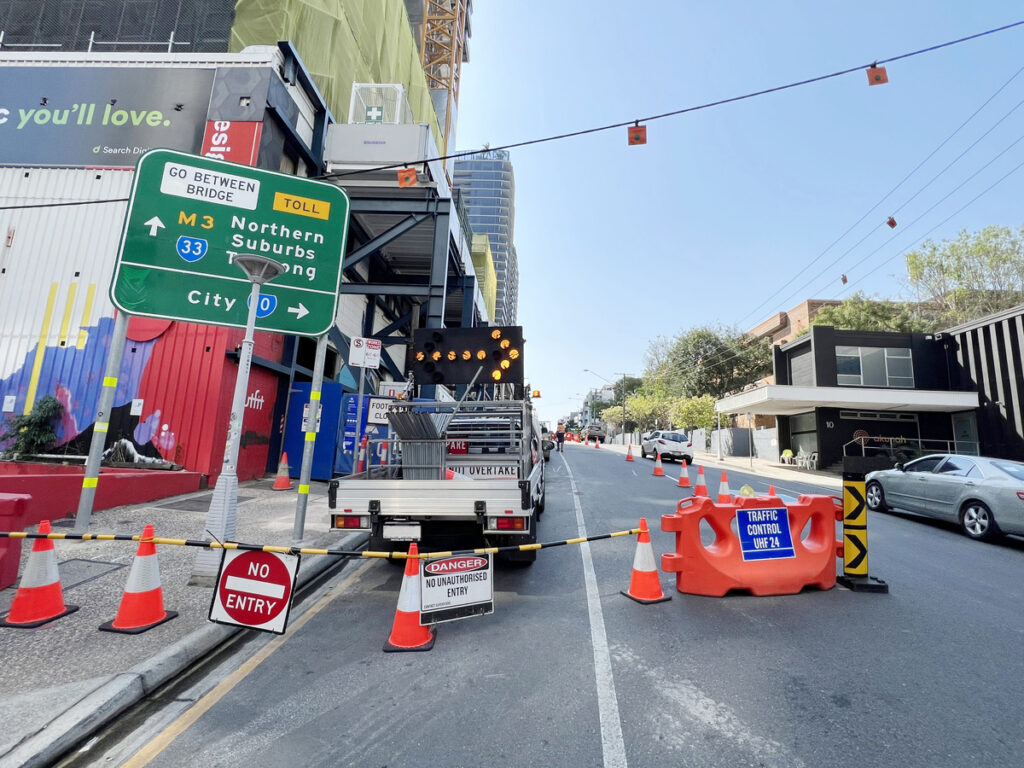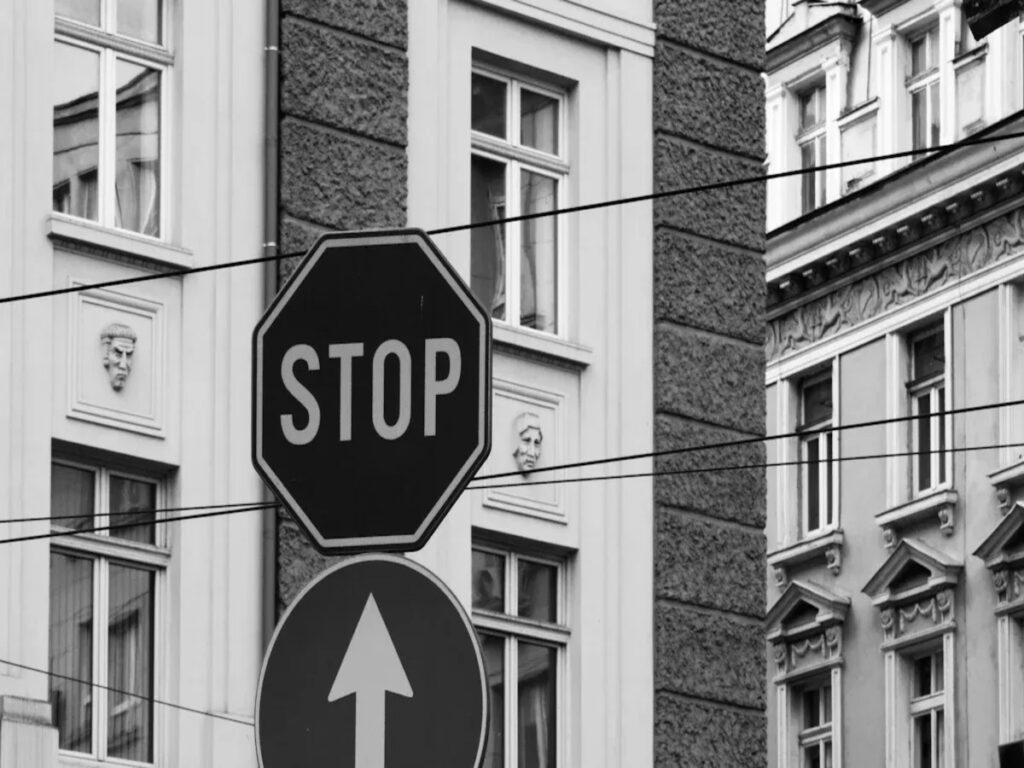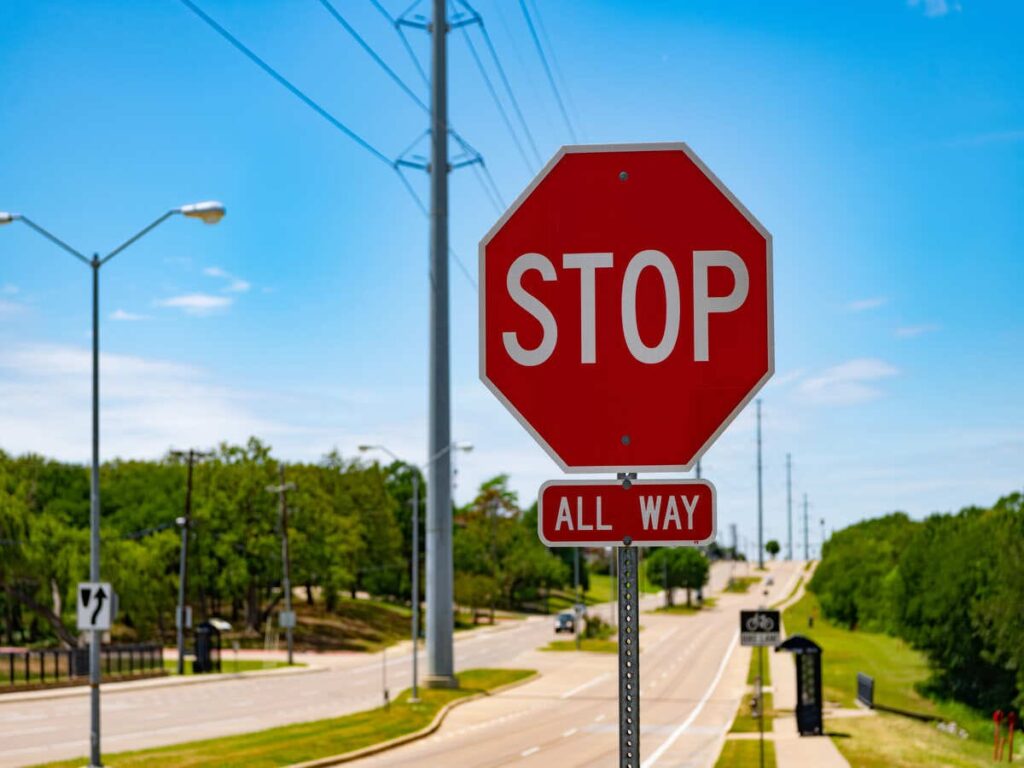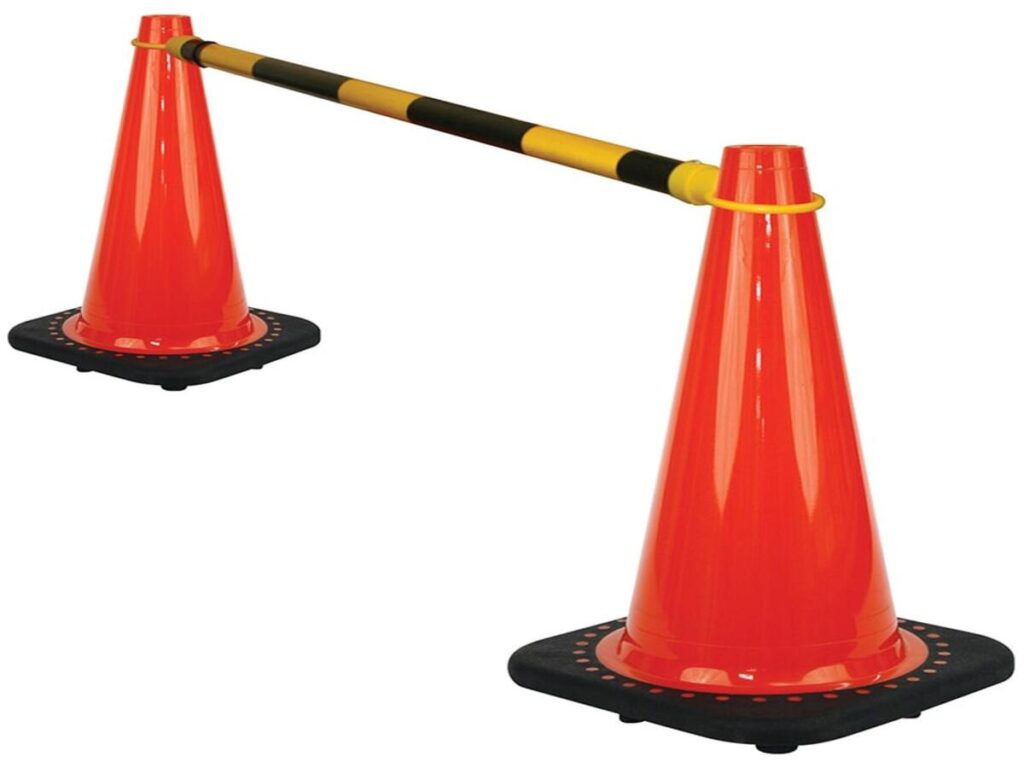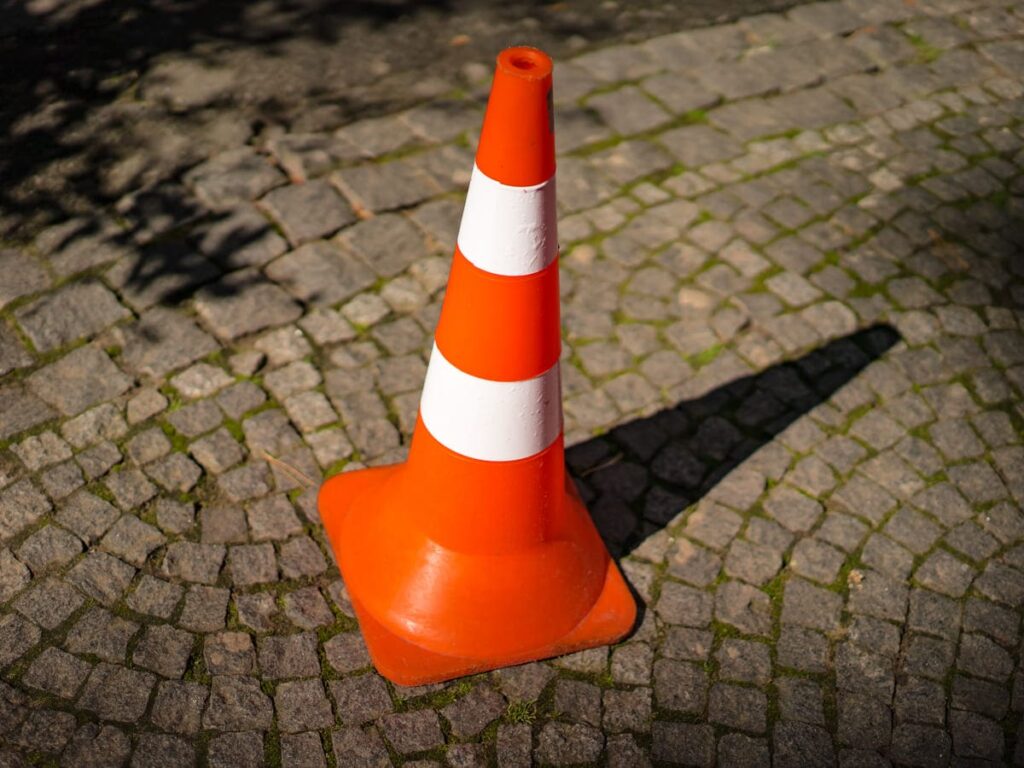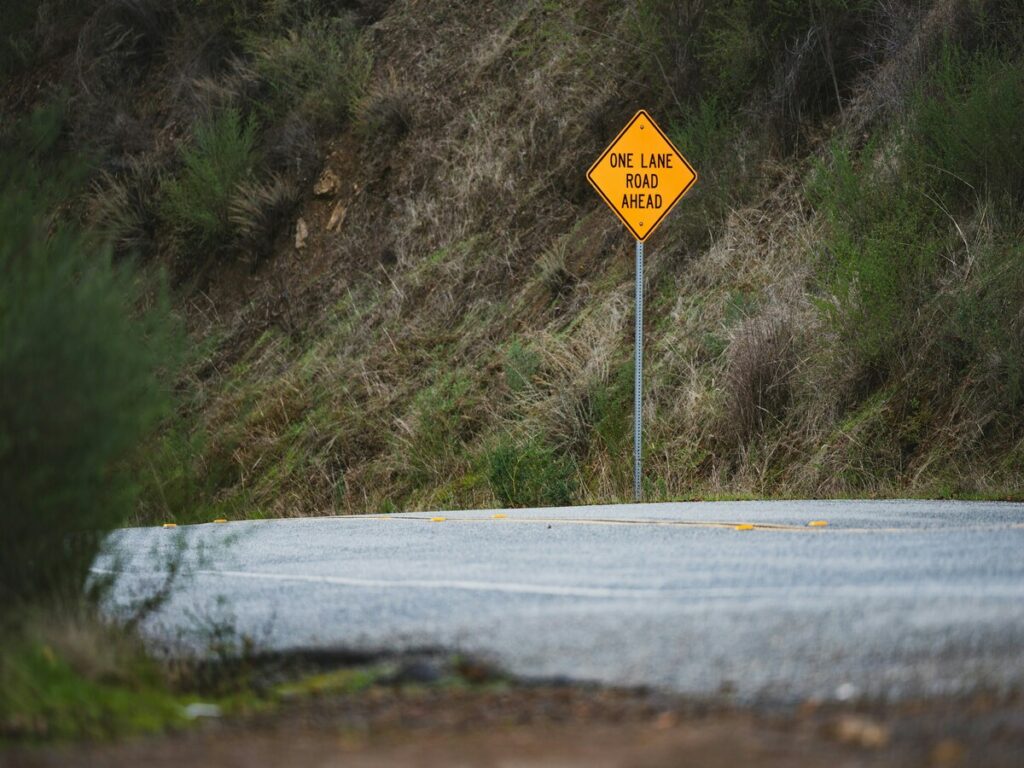
Reflektierblatt der Ingenieur -Klasse ist eine billige und vertrauenswürdige Wahl für Schilder in vielen Städten. Städte und Gruppen wählen dieses Material häufig für reflektierende Verkehrszeichen aus. Es gibt einen guten Preis und lässt die Leute immer noch die Zeichen gut sehen. Viele Unternehmen, die reflektierende Verkehrszeichen verkaufen, Wie Ingenieur -Note, ist mehr als die Hälfte dessen, was die Leute kaufen. Dies liegt daran, dass es nicht teuer ist und lange dauert.
- Governments and places that need to save money often use this for signs. They want good signs but also want to spend less.
- Better ways to make it have made engineer grade reflective sheeting even better. It is now a top pick for signs that are not very important, where saving money matters most.
This material helps make traffic signs easy to see and keeps sign projects on budget. To learn more about selecting the best reflective materials for Sicherheitsschilder zum Verkauf, check out the OPTRAFFIC blog So wählen Sie die besten reflektierenden Materialien für Verkehrszeichen aus. This guide provides valuable insights into choosing the right materials based on safety, Sichtweite, and budget considerations.
Key Takeaways
- Engineer grade reflective sheeting is a cheap way to make traffic signs easy to see. It works best on local roads and roads that are not very busy. This material has tiny glass beads that bounce light back to drivers. This helps people see signs better at night and when the weather is bad. It is strong and can handle rain, Sonne, und Wind. It can last 7 Zu 10 years if you take care of it. You should pick the right reflective sheeting for each road. The choice depends on how important the road is and how much traffic it gets. Engineer grade is good for signs that are not very important. Using engineer grade sheeting saves money on big projects. It also keeps roads safe and makes signs easy to see.
What Is Engineer Grade Reflective Sheeting?
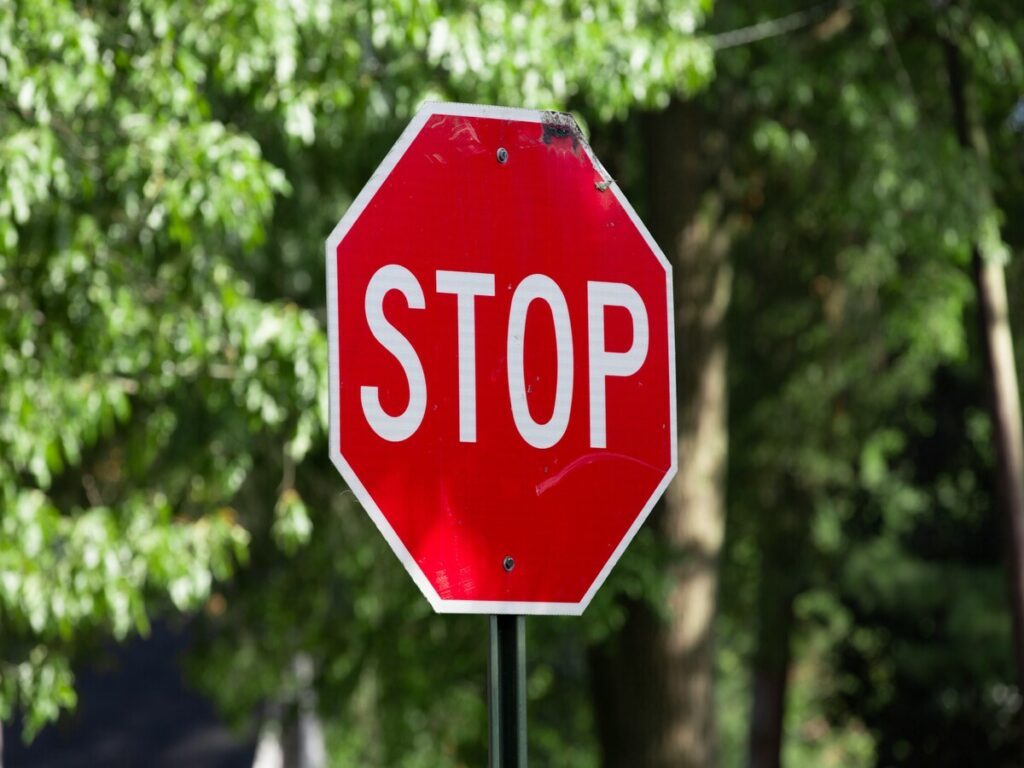
Retroreflective Technology
Reflektierende Folie in Ingenieurqualität uses special retroreflective technology to help keep roads safe. This technology uses tiny glass beads that catch light and send it back. When car headlights hit a sign, the beads bounce the light back to the driver. This makes traffic signs much easier to see at night or when the weather is bad.
Der Texas Transportation Institute made a model to test how well retroreflective materials work for drivers. The model uses headlight shapes and angles to set rules for how bright signs should be. It helps make sure reflective sheeting works for drivers in many situations.
Reflective sheeting sends light back to where it came from instead of spreading it everywhere. This helps drivers see signs at any time and cuts down on glare for others. Companies that make reflective sign sheeting use these ideas to meet tough safety rules.
Material Composition
Engineer grade sheeting is made from two main things: micro-glass beads and polymer films. The factory puts millions of tiny round glass beads into a strong plastic film. This makes a surface that reflects light well and does so every time.
- The plastic film holds the glass beads and keeps them safe.
- The glass beads make the sheeting very reflective, which helps signs stand out when it is dark.
- Using both materials helps the sheeting stay affordable, gut arbeiten, und lange lange Zeit.
A normal roll of engineer grade reflective sheeting is about 1.24 meters wide and 45.7 meters long. It weighs about 0.600 Kilogramm. These sizes make it easy for workers to use the material on many types of signs. Reflective sheeting for traffic signs must meet certain rules for how bright and tough it is, so makers work hard to make the beads stick well to the film.
Haltbarkeitsfunktionen
Reflective sheeting needs to last outside in tough weather. Engineer grade sheeting has special coatings to protect it from rain, Sonne, und Feuchtigkeit. These coatings help stop the material from fading, knacken, or peeling as time goes by.
- Weatherproof coatings keep the sheeting bright and working well, even after years in the sun and rain.
- UV protection stops the colors and shine from fading, Schilder bleiben also leicht zu lesen.
- The plastic film lets the sheeting bend to fit different shapes without losing its shine.
Traffic signs made with this material work well for signs that are not super important. The design and coatings help balance cost and how long the sheeting lasts, so engineer grade reflective sheeting is a smart pick for many jobs.
Types of Reflective Sheeting for Traffic Signs
Engineer Grade vs. Other Grades
There are different kinds of reflective sheeting for traffic signs. Each kind has its own job and special features. Engineer grade reflective sheeting uses micro-glass beads to bounce light back. It is not too expensive and works well. Many cities use it for signs where people need to see them, but it is not the most important spot.
Prismatische reflektierende Folie mit hoher Intensität uses prisms to reflect more light. This type is brighter than engineer grade. It is good for busy roads or places where signs must be seen from far away. Diamond grade sheeting uses full-cube prisms. It is also called ASTM Type IX or XI. This type is the brightest and easiest to see, even in hard weather.
Der Center for Transportation Research and Education studied these types. They found that using better sheeting can lower crash numbers. Sioux City, Iowa, had 38% fewer crashes after using higher grades. The table below shows how much each type costs and how long it lasts:
| Blattart | Cost per sq. ft. (ca.) | Expected Sign Life (Jahre) | Relative Cost Increase |
|---|---|---|---|
| Typ I | $0.75 | 5 | Grundlinie |
| Type II | $1.25 | 10 | Moderate increase |
| Typ III & Iv | $1.50 | 15 | Higher increase |
| Types VII-X | $3.50 | 15+ | Highest increase |
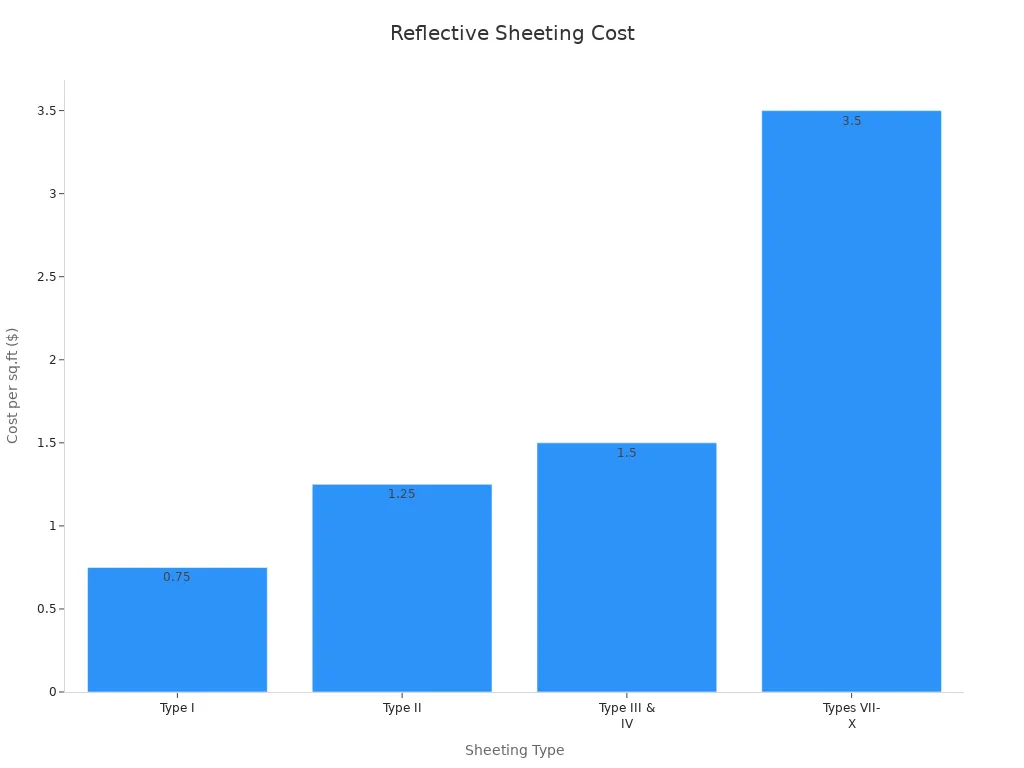
A research article said that the age of the sign and the brand of sheeting matter. These things change how well the sheeting works as time goes on. This helps groups know when to fix or change signs.
When to Use Each Type
Picking the right reflective sheeting depends on what you need. Engineer grade reflective sheeting is good for local roads and quiet places. It saves money and still lets people see the signs. High intensity prismatic reflective sheeting is better for busy roads. It helps drivers see signs at night and in bad weather.
Diamond grade sheeting is best for important spots. These are highways, stark befahrene Kreuzungen, and places with lots of crashes. Es ist am hellsten und hält am längsten. Groups often look at all the costs before choosing. They think about buying, putting up, Festsetzung, and changing signs. This helps them pick the best sheeting for the job and save money.
Tipp: Groups should choose the right sheeting for where the sign is and how important it is. This keeps people safe and helps control costs for all signs.
Applications of Engineer Grade Reflective Sheeting
Local and Residential Roads
Engineer grade reflective sheeting helps make local roads safer. Many towns use this material for signs because it is bright and cheap. Drivers can see these signs day and night. This helps stop confusion and keeps people safe. A study showed that using this sheeting on STOP signs led to fewer crashes. In South Carolina, there were fewer rear-end crashes. In Connecticut and South Carolina, three-legged intersections had fewer crashes too. The biggest benefits were on roads with less traffic. Even a small drop in crashes makes the cost worth it. That is why many towns pick this sheeting for their road signs.
Non-Critical and Temporary Signage
Engineer grade reflective sheeting works well for signs that are not very important or are only needed for a short time. Bauzonen, Umwege, and event parking lots use these signs. They do not need to be the brightest, just easy to see. Agencies like this material because it is strong and not expensive. Workers can put up and take down these signs fast. This helps when roads change and keeps projects moving. The sheeting is bright enough to help drivers stay safe during changes. It also saves money for other important needs.
Notiz: Using engineer grade reflective sheeting for short-term signs lets agencies spend more on important areas and still keep people safe.
Regulatory and Informational Signs
Many groups use engineer grade reflective sheeting for rule and info signs on roads with some traffic. Der MUTCD says Type I sheeting is okay for signs with white, Grün, or red backgrounds. This includes STOP signs and parking rules. Agencies follow these rules to make sure signs are bright enough. This keeps roads safe and helps drivers get clear info any time. Agencies also think about how long the sheeting lasts and how much it costs. This helps signs work well for a long time.
Benefits of Engineer Grade Reflective Sheeting
Kosteneffizienz
Engineer grade reflective sheeting is a smart choice for saving money. Cities and groups pick this material because it works well and costs less. It is cheaper than other types, so it is good for big projects or places with small budgets. Many groups use this sheeting for signs in less busy spots. They can put up more signs without spending extra money. This helps make sure every street and corner has a sign. It also helps use public money in the best way while keeping people safe. The sheeting lasts a fair amount of time, so signs do not need to be replaced often. This means fixing and changing signs costs less over the years.
Tipp: Using engineer grade reflective sheeting lets project leaders spend money wisely. They can save the more expensive materials for places that need to be seen better.
Sichtbarkeit und Sicherheit
Being able to see signs is very important for safety on roads. Engineer grade reflective sheeting uses tiny glass beads to bounce light back. This helps drivers see signs at night or when the weather is bad. The signs are easy to see, which helps keep drivers safe in many situations.
- Traffic cones with this sheeting have helped lower night crashes by up to 30% in Arbeitszonen.
- The glass beads help drivers see signs from far away, so they have more time to react.
- Studies show fewer crashes and more driver trust when these cones are used.
- One road project had fewer night crashes after using these cones.
- A city street project used these cones to stop confusion and crashes.
3M™ Engineer Grade Reflective Sheeting meets Type I rules. It gives good reflectivity for signs in places with some traffic. Even though better sheeting can lower crashes by 25% Zu 46%, engineer grade still helps keep roads safer. These facts show that reflective sheeting is a good way to make roads safer.
Installation und Wartung
Engineer grade reflective sheeting is easy to use and take care of. The material bends and fits many sign shapes, so workers can put it on different signs fast. This makes putting up signs quicker and saves on work costs. Maintenance workers like that this sheeting is tough. It has special layers to protect it from rain, Sonne, und Wasser, Schilder bleiben also lange hell. When signs need to be changed, it is easy and does not cost much. Workers can swap out signs quickly without causing problems. A good plan for fixing signs keeps them easy to see and helps keep roads safe. Picking engineer grade reflective sheeting gives groups a strong and simple way to handle signs and keep them working well.
Kosten-Nutzen-Analyse
Initial and Lifecycle Costs
Engineer grade reflective sheeting gives a good deal for many sign projects. It costs less at first than higher-grade materials. Many groups pick this sheeting because they can cover more places and not go over budget. Im Laufe der Zeit, spending on good reflective coatings can save money. Zum Beispiel:
- A food plant paid 15% more at first for better reflective materials. This saved 30% on energy each year and made maintenance last twice as long. Über 20 Jahre, they saved 25% on total costs.
- A shipping center spent 10% more for better insulation and thicker steel. This cut energy bills by 40% and paid for itself in 6 Jahre.
- An office building spent 12% more at the start for better waterproofing. This lowered repairs and water damage for 30 Jahre.
These examples show that paying more at first can mean fewer replacements and lower costs later. This makes engineer grade reflective sheeting a smart choice for the long run.
Performance in Real-World Conditions
Engineer grade reflective sheeting works well in many real-life places. Cities and groups say signs with this material stay bright and strong for years. The coatings keep out bad weather and sun, so signs do not fade or peel fast. This means workers spend less time and money fixing signs. Signs on local roads, Parkplätze, and neighborhoods often last as long as they should. This helps keep roads safe and budgets steady.
Budget Allocation Tips
Project leaders can make their money go further by using engineer grade reflective sheeting in less important spots. They can save the best materials for highways or busy roads. Planning for both first and future costs helps teams use money wisely. Good data and smart design choices make every dollar count. Groups that do this often save money and get better signs over time.
Choosing Engineer Grade Reflective Sheeting
Projekteignung
When picking engineer grade reflective sheeting, you must know what the project needs. This material works best for signs on local roads and quiet streets. It is also good for places where not many cars go by. Agencies use it for signs that are not the most important, like parking or speed limit signs. It is also used for special neighborhood signs. These signs do not need to be the brightest, but they still help keep roads safe. Engineer grade sheeting is also great for event signs or signs that are only needed for a short time. The material is flexible, so teams can make different shapes and sizes. This makes it a smart choice for many road jobs.
Tipp: If you want to save money but still keep roads safe, engineer grade reflective sheeting is a good pick.
Konformität und Standards
It is very important to follow the rules for road signs. Engineer grade reflective sheeting meets many big standards:
- The Federal Register says signs with engineer grade (Typ I) sheeting must be replaced every 7 years for most signs and every 10 years for street name and overhead signs.
- Agencies have 2 years to check signs and find ones that are not bright enough.
- ASTM D4956-04 explains what retroreflective sheeting is and says Type I must be at least 65 CD/LX/m².
- The MUTCD Section 2A.08 says agencies must keep signs bright enough and use approved ways to check, like looking at night or measuring the sign.
- The FHWA gives dates and rules for following these standards.
These rules show that engineer grade reflective sheeting is safe and trusted for many road signs.
Umweltüberlegungen
The weather matters a lot when picking sheeting. Engineer grade reflective sheeting works well in most places, even where it rains or is sunny. It also does well when the weather changes a little. The special coatings stop fading and protect from UV rays. This keeps signs looking bright and easy to read. If a place has really tough weather, agencies may look at local weather before choosing. Die meiste Zeit, engineer grade sheeting lasts a long time and helps keep roads safe. Custom signs can be made for special weather needs, so every project can work well.
Fallstudien: Reflective Traffic Signs in Action
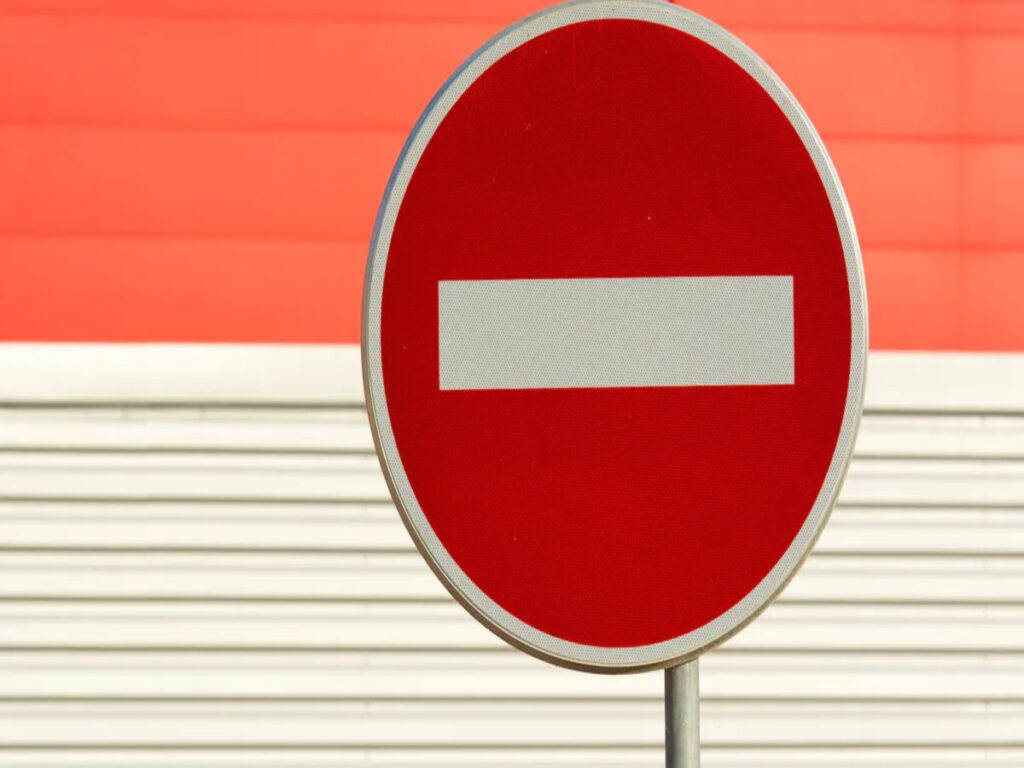
Residential Area Example
A city in the Midwest wanted better signs in neighborhoods. The team needed to make roads safer but had little money. They picked engineer grade reflective sheeting for stop, Geschwindigkeitsbegrenzung, und Straßennamenschilder. This material helped people see the signs well and followed local rules.
Project goals were:
- Make signs easier to see at night for drivers and walkers.
- Use a cheaper way to replace many signs.
- Let signs be made in special shapes for each area.
The city worked with a company to make special signs for some corners. Workers put up all the signs in less than two weeks. People living there saw the signs were brighter at night. City leaders got fewer complaints about signs being hard to see or missing. The project cost less than planned. The city wants to do the same thing for more roads soon.
Notiz: Custom signs help neighborhoods fix safety problems without spending too much.
Industrial Zone Example
A logistics park near a big highway needed new traffic signs. Many trucks and delivery vans drove there all day and night. Leaders wanted signs that could last and handle bad weather. They used engineer grade reflective sheeting for rule and direction signs on every road in the park.
Main project goals:
- Help drivers find their way and stop confusion.
- Make special signs for loading spots and areas with rules.
- Put up signs fast so work in the park did not stop.
The team got signs with easy-to-read pictures and company logos. Workers put up the signs in one weekend, so the park stayed open. After the new signs, drivers missed fewer turns. Managers saw traffic move better. The project showed that engineer grade reflective sheeting works well in busy work areas.
Engineer grade reflective sheeting is a good choice for signs that are not very important. It helps people see the signs and does not cost too much. Many workers save money on projects but still keep roads safe. Teams should think about what the project needs, how much money they have, and what the weather is like before picking materials.
EGS is a smart pick when you need to see signs and save money.
- Look at each project closely
- Use the best material for each place
- Always think about safety and saving money
FAQ
What is engineer grade reflective sheeting used for?
Engineer grade reflective sheeting is good for local roads and parking lots. It is also used for signs that are not very important. Cities and companies pick this material because it is bright and not expensive. Many people trust a reflective traffic signs supplier for these jobs.
How long does engineer grade reflective sheeting last?
Most engineer grade reflective sheeting lasts 7 Zu 10 Jahre. How long it lasts depends on the weather and the sun. It also depends on how well it is put up. Checking signs often helps keep them bright and working well.
Can engineer grade reflective sheeting meet regulatory standards?
Ja, es kann. Engineer grade reflective sheeting meets important rules like ASTM D4956 Type I and MUTCD. Agencies and builders talk to a reflective sign sheeting manufacturer to make sure the rules are met for each job.
Who should consider using engineer grade reflective sheeting?
Project managers and city planners should think about this material. Facility operators can use it for signs that are not very important or are only needed for a short time. It saves money and still lets drivers and walkers see the signs.
How do you choose a reliable reflective traffic signs supplier?
A good supplier gives certified materials and helps with questions. They also send orders quickly. Many groups pick a supplier with lots of experience and a good name. Looking at reviews and checking warranties helps make sure you get good products.


